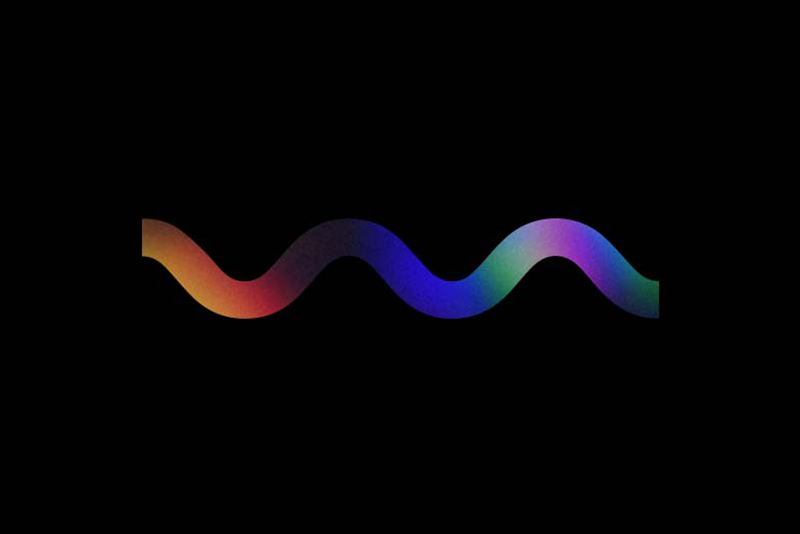The idea of Holography has captivated and fascinated minds for over 100 years. It made a name for itself in pop culture, being used to bring Walt Disney and Tupac to life. Yet, do these examples and others like them represent the true potential of holographic technology? The possibilities for deploying true 3D holography are right in front of our eyes. But, let’s look into the past to see how far we have come as an industry…
Stage Lighting Illusions vs. True Holography
Mimicking technology that creates an illusion of holography has been around since the 1800s, and is often confused with holography, which wasn’t invented until 1947. Today’s technology can significantly enhance the vision of the original creators of holography. At Swave, we are recognizing that vision and advancing it into the future.
The common misconception of what holography is dates back to the technique known as Pepper’s Ghost. Pepper’s Ghost is an optical illusion that uses reflection to create a virtual image that appears to be 3D. The original Pepper’s Ghost illusion involves placing a large piece of glass at an angle between a brightly lit “stage” room and a hidden room. The glass reflects the hidden room, kept dark, that holds a “ghostly” scene. By adjusting the lighting between the hidden and stage rooms, the image appears to the audience.

Pepper’s Ghost is not real holography and cannot equal the realism that true holography can achieve. It requires a fixed installation, it cannot be seen from different angles, it often appears “ghostly”, and it operates with lower resolution and limited color.
Modern Holography: Early Development and Innovations
In 1947, Dennis Gabor invented true holography, proving mathematically that holography would work by combining electron beams and regular light. Holograms would need to use both phase and amplitude to obtain a complete holo-spatial picture. Gabor proposed splitting an electron beam into an object and a mirror, which upon reflection would produce interference on a photographic plate.
It wasn’t until 15 years later that holography made significant advances. Optical holography progressed with the invention of the laser in 1960. The laser’s pure, intense light was, and still is, ideal for making holograms. In 1962, Emmett Leith and Juris Upatnieks recognized from their work in side-reading radar that holography could be used as a 3D visual medium. Leith and Upatnieks read Gabor’s paper on holography and decided to duplicate Gabor’s technique using the laser and an “off-axis” technique borrowed from their work in the development of side-reading radar.
The result was the first laser transmission hologram of 3D objects — a toy train and a bird. These transmission holograms produced images with clarity and realistic depth but required laser light to render the holographic image. A decade later, in 1972, Lloyd Cross developed the integral hologram by combining white-light transmission holography with conventional cinematography to produce moving 3D images.
Today’s Pepper’s Ghost
Moving into the 21st century, the most popular form of mimicking holography has been high-quality video projection, 3D modeling and animation techniques. These formats create lifelike “digital doubles” of celebrities and leaders, which can be projected to large crowds. But these faux techniques have the same drawbacks and limitations as the original Pepper’s Ghost. These modern incarnations of Pepper’s Ghost are commonly used wherever fixed installation and fixed viewing angle can be employed such as theater, cinema, amusement parks, museums, television, and concerts.
Tomorrow: The Importance and Potential of True Holography
Swave is dedicated to fulfilling the aspirations of holography’s dreamers and pioneers through new advances in the technology. We are working on holography in its true form, sculpting and steering lightwaves to render 3D images, opening up the technology to important applications across different industries.
Swave’s chip-based Holographic eXtended Reality (HXR) technology is the first spatial light modulator specifically designed for digital holography using the world’s smallest pixels.
True holography prevails over Pepper’s Ghost and other faux techniques. HXR true holography correctly provides real-life depth cues such as Vergence (a binocular effect related to the angles of both eyes), Accommodation (a monocular effect related to focus) and Parallax (the apparent shift in the position of an object when viewed from different angles) which helps the user perceive the image as natural and realistic and make the 3D image easy on the eyes and brain.
Why Bringing Holography to the 21st Century is Important
With the advent of technologies like augmented reality (AR), holography has the potential to enhance experiences significantly with a reality-first user experience Holographic AR glasses will seamlessly blend the real and virtual worlds, correctly displaying digital overlays like navigation and translations at the right depth in real 3D. And because Holography makes real images in real 3D, it can display these images without the Vergence-Accommodation conflict (VAC). VAC is caused by faux 3D implementations and leads to visual discomfort and even nausea.
AR technology that can integrate holograms into the environment allows for a reality-first user experience, and Swave’s technology can be informed by AI to enhance everyday life. Our technology doesn’t stop there — Swave’s technology can expand into different high-tech display applications such as automotive HUDs, holographic walls, medical imaging, scientific visualizations, and other advanced displays.
Holography has come a long way since its invention, evolving from a scientific curiosity to a technology with practical applications. Swave exemplifies the advancements in holography, and how yesterday’s fantasy becomes tomorrow’s cutting edge technology.



